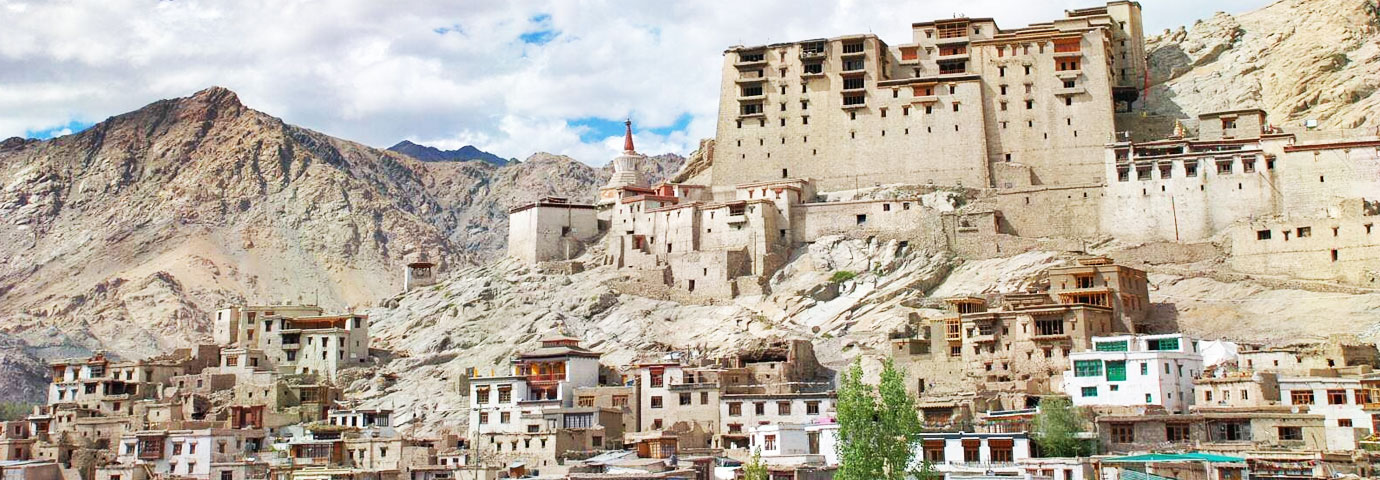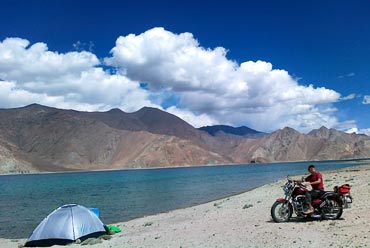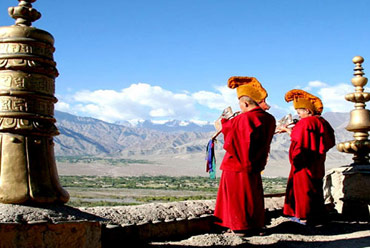Tourist Attractions in Alchi
The shrines at Alchi, some of which date back to the late eleventh century, are considered by scholars to be among the most extensive examples of Buddhist art in Kashmir. Du-Khang is the earliest temple at Alchi, founded by Kal-dan Shes-rab around the 11th century AD. There is an elaborately carved doorway with panels of tiny Bodhisattvas and guardian figures. The walls are adorned with mandalas and sacred forms that illustrate the structure of Buddhist cosmology.
Sum-tsek is a triple-storied temple with a carved wooden façade consisting of pillars, carved brackets, and capitals. The walls of the halls are covered with mandalas in vibrant colors, standing figures of Bodhisattvas, Manjushri (the embodiment of wisdom), Avalokiteshvara, and Maitreya Buddha.
Lotsawa Lha-Khang and Manjushri Lha-Khang are two adjoining shrines that share a similar plan. The square shrine has four central columns that hold up the raised roof. Within the shrine of Manjushri are four large plaster images of the Bodhisattva. The murals of the temple follow the theme of the thousand Buddha while gods and goddesses dominate the wall space.
Lha-Khang Soma is a structure constructed later in comparison to other shrines of Alchi. Within the small square room is a chorten or votive stupa. Columns that support the roof have wonderful carved brackets with lion faces. Walls of the shrine are painted with the images of Vairochana, Buddha, Bodhisattvas, and guardian figures. The doorway is decorated and protected as usual with the image of Mahakala.
Places Around Alchi
The region has several spectacular monasteries that seem to grow out of the rugged escarpments and mountain ridges. There are monasteries at Shey, Thikse, and Hemis, which have a wealth of Buddhist images, murals, and carvings.
Leh is the capital of Ladakh Autonomous Council and the most convenient gateway to Ladakh. The sites to visit include Leh Palace, Leh Mosque, and many gompas.











